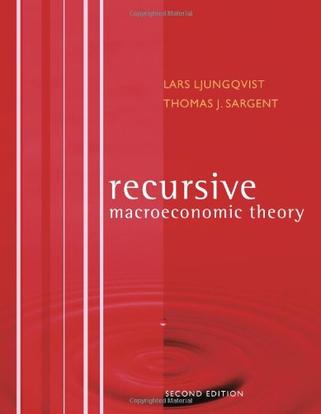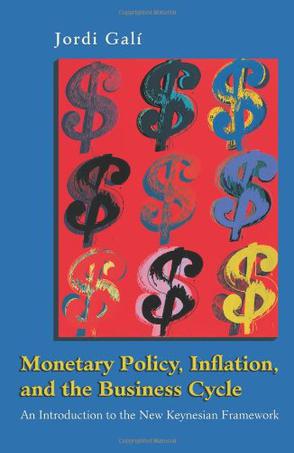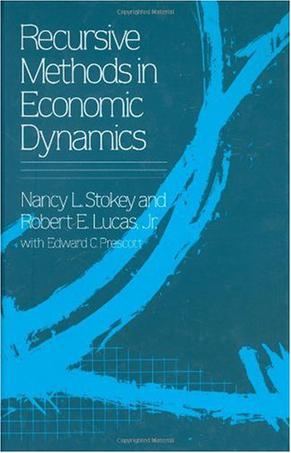-

Recursive Macroeconomic Theory
Recursive methods offer a powerful approach for characterizing and solving complicated problems in dynamic macroeconomics. Recursive Macroeconomic Theory provides both an introduction to recursive methods and advanced material, mixing tools and sample applications. The second edition contains substantial revisions to about half the original material, and extensive additional coverage appears in seven chapters new to this edition. The updated and added material covers exciting new topics that further illustrate the power and pervasiveness of recursive methods.Significant improvements to original chapters include a better treatment of the existence of recursive equilibria, an enhanced account of the supermartingale convergence theorem, and an extended treatment of an optimal taxation problem in an economy in which there are incomplete markets. Completely new coverage in the second edition includes an introductory chapter, which gives an overview of the themes uniting the diverse topics treated throughout the book. Two new chapters offer a self-contained account of the optimal growth model and some of its basic applications in macroeconomics and public finance. Other new chapters cover such topics as how to formulate and compute Stackelberg or Ramsey plans in linear economies, sustainable risk-sharing equilibria without commitment, and the application of recursive contracts to topics in international trade. Most chapters conclude with exercises and the book includes two technical appendixes covering functional analysis and control and filtering. -

RBC之ABC
本书的前七章介绍的是简单模型及其求解技术。从第8章开始的第二部分,对基本模型进行了多方拓展。每章都同样是一般均衡架构,但是每章都包含新内容。本书还给出了一个包含货币的开放经济模型,以用于分析汇率问题。 -

Advanced Macroeconomics
Product Description David Romer’s Advanced Macroeconomics, 4e, continues its tradition as the standard text and the starting point for graduate macroeconomic courses and helps lay the groundwork for students to begin doing research in macroeconomics and monetary economics. Formal models are used to present and analyze key ideas and issues. The theoretical analysis is supplemented by examples of relevant empirical work, illustrating the ways that theories can be applied and tested. This well-respected and well-known text is unique in the marketplace. -

Monetary Policy, Inflation, and the Business Cycle
The New Keynesian framework has emerged as the workhorse for the analysis of monetary policy and its implications for inflation, economic fluctuations, and welfare. It is the backbone of the new generation of medium-scale models under development at major central banks and international policy institutions, and provides the theoretical underpinnings of the inflation stability-oriented strategies adopted by most central banks throughout the industrialized world. This graduate-level textbook provides an introduction to the New Keynesian framework and its applications to monetary policy. Using a canonical version of the New Keynesian model as a reference framework, Jordi Gal explores issues pertaining to the design of monetary policy, including the determination of the optimal monetary policy and the desirability of simple policy rules. He analyzes several extensions of the baseline model, allowing for cost-push shocks, nominal wage rigidities, and open economy factors. In each case, the implications for monetary policy are addressed, with a special emphasis on the desirability of inflation targeting policies. The most up-to-date and accessible introduction to the New Keynesian framework available Uses a single benchmark model throughout Concise and easy to use Includes exercises An ideal resource for graduate students, researchers, and market analysts -

Recursive Methods in Economic Dynamics
This rigorous but brilliantly lucid book presents a self-contained treatment of modern economic dynamics. Stokey, Lucas, and Prescott develop the basic methods of recursive analysis and illustrate the many areas where they can usefully be applied. After presenting an overview of the recursive approach, the authors develop economic applications for deterministic dynamic programming and the stability theory of first-order difference equations. They then treat stochastic dynamic programming and the convergence theory of discrete-time Markov processes, illustrating each with additional economic applications. They also derive a strong law of large numbers for Markov processes. Finally, they present the two fundamental theorems of welfare economics and show how to apply the methods developed earlier to general equilibrium systems. The authors go on to apply their methods to many areas of economics. Models of firm and industry investment, household consumption behavior, long-run growth, capital accumulation, job search, job matching, inventory behavior, asset pricing, and money demand are among those they use to show how predictions can he made about individual and social behavior. Researchers and graduate students in economic theory will find this book essential.